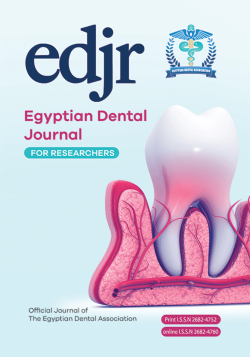Ahmed Nabil Roshdy, Maged Hakim And Lamiaa Khairallah,
ABSTRACT
The Purpose Of This Study Is To Evaluate The Bond Strength Of Zirconia Core To Ceramic Veneer At Different Marginal Dimensions.
Materials and Methods: A Stainless Steel Die Resembling A Prepared Mandibular Premolar Was Machined To Allow Standardization Of The Prepared Crowns. Total Number Of Forty Ceramic Crowns Were Fabricated Using This Die. The Samples Were Then Divided Into Four Groups According To The Axial Distances From The Core To The Finish Line That Was Completed With The Veneering Material. Group 1: Zirconium Oxide Core Fabricated Till The Finish Line, Group 2: Zirconium Core 0.5 Mm Short Of The Finish Line, Group 3: Zirconium Oxide Core 1mm Short Of The Finish Line, Group 4: Zirconium Oxide Core 1.5mm Short Of The Finish Line. The Core Was Veneered And The Short Core Margins Were Completed Using Zipress Veneering Material. Then Each Group Was Thermocycled 1500 Cycles Between 5-55�C. The Samples Were Then Tested For Flexure Strength.
Results: There Was A Statistically Significant Decrease In Fracture Resistance After Thermocycling Within Each Of The Four Different Groups.
Conclusion : The Bond Strength Of Zirconia Core And The Veneering Material Might Be Affected By The Difference In The Thermal Conductivity Between Both Materials.


